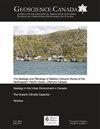Igneous Rock Associations 22. Experimental Petrology: Methods, Examples, and Applications
IF 0.8
4区 地球科学
Q3 GEOSCIENCES, MULTIDISCIPLINARY
引用次数: 3
Abstract
Experiments are an important source of basic information in petrology, from thermodynamic data used to develop predictive models to physical property data used to understand magma ascent and eruption. Since we all use experimental data in our work as geoscientists, it is important that we have a basic understanding of the methods used to prepare and perform experiments on rocks and minerals and their synthetic analogues. In this review I examine how the observational science of geology changed in the late 1800’s with the development of the interdisciplinary science of physical chemistry. The second part of the paper discusses what factors need to be considered in designing an experimental study; it focuses particularly on the problems of reaching equilibrium on the short timescales available in the laboratory. In the final section, I give four examples of geological problems that have been solved using experimental methods and make some suggestions about the directions that future experimental campaigns might take.RÉSUMÉL’expérimentation est une source importante d’information de base en pétrologie, qu’il s’agisse de données thermodynamiques pour développer des modèles prédictifs, ou des propriétés physiques utilisés pour comprendre la montée et l’éruption d’un magma. Puisque nous utilisons tous des données expérimentales dans notre travail de géoscientifique, il est important que nous ayons une compréhension minimale des méthodes utilisées pour préparer et réaliser des expériences sur les roches, les minéraux et leurs analogues de synthèse. Dans la présente étude, je me suis penché sur les changements survenus en science d’observation qu’est la géologie, à la fin des années 1800, avec le développement de la science interdisciplinaire de la chimie physique. La deuxième partie de l’article traite des facteurs à prendre en compte dans la conception d’une étude expérimentale; elle porte en particulier sur les problèmes d’atteinte d’un équilibre sur les temps courts du laboratoire. Dans la dernière section, je donne quatre exemples de problèmes géologiques qui ont été résolus à l’aide de méthodes expérimentales, et je fais des suggestions sur des orientations qui pourraient être adoptées lors de campagnes expérimentales à venir.火成岩协会22。实验岩石学:方法、实例和应用
实验是岩石学基础信息的重要来源,从用于建立预测模型的热力学数据到用于了解岩浆上升和喷发的物性数据。作为地球科学家,我们在工作中都使用实验数据,因此,对岩石和矿物及其合成类似物的准备和实验方法有一个基本的了解是很重要的。在这篇综述中,我考察了19世纪后期地质学的观测科学是如何随着物理化学这门跨学科科学的发展而发生变化的。论文的第二部分讨论了在设计实验研究时需要考虑哪些因素;它特别侧重于在实验室可用的短时间尺度上达到平衡的问题。在最后一节,我给出了四个已经用实验方法解决的地质问题的例子,并对未来实验活动可能采取的方向提出了一些建议。* * * * * * * * * * * * * * * * * * * * * * * * * * * * * * * * * * * * * * * * * * * * * * * * * * * * * * * * * * * * * * * * * * * * * * * * * * * * * * * * * * * * * * * * * * * * * * * * * * * * * * * * * * * *。将不同的方法应用到不同的实验中,不同的方法应用到不同的实验中,不同的方法应用到不同的实验中,不同的方法应用到不同的实验中,不同的方法应用到不同的实验中,不同的方法应用到不同的合成中。Dans la pracentente samete, je me suis penchche sur les changements survenus en science d 'observation qu 'est la gacetologie, la findes annacetes 1800,平均值为pracententement de la science跨学科de la chimie体质。第二个一部分de l 'article行程的影响一个让我们考虑在构思一个练习曲experimentale;Elle Porte特别解决了所有的问题,但没有解决所有的问题,也没有解决所有的问题。在这一节中,有四个问题的例子,说明了如何使用 交换交换系统- - - - - - - - - - - - - - - - - - - - - - - - - - - - - - - - - - - - - - - - - - - - - - - - - - - - - - - - - - - - - - - - - - - - - - - - - - -
本文章由计算机程序翻译,如有差异,请以英文原文为准。
求助全文
约1分钟内获得全文
求助全文
来源期刊

Geoscience Canada
地学-地球科学综合
CiteScore
3.30
自引率
0.00%
发文量
9
审稿时长
>12 weeks
期刊介绍:
Established in 1974, Geoscience Canada is the main technical publication of the Geological Association of Canada (GAC). We are a quarterly journal that emphasizes diversity of material, and also the presentation of informative technical articles that can be understood not only by specialist research workers, but by non-specialists in other branches of the Earth Sciences. We aim to be a journal that you want to read, and which will leave you better informed, rather than more confused.
 求助内容:
求助内容: 应助结果提醒方式:
应助结果提醒方式:


